|
Printables |
PowerPoints |
Online exercises |
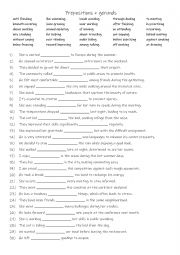
|
B1-B2 30 prepositions + gerunds
Many English expressions rely on specific prepositions and gerunds. Mastering these can improve fluency and make language sound more natural.Using the correct prepositions and gerunds can elevate students writing style, making it more varied and engaging. First, students need to familiarise themselves with the 30 and prepositions and gerunds to che...
Level: intermediate
Age: 10-100
Type:
Downloads: 133
|
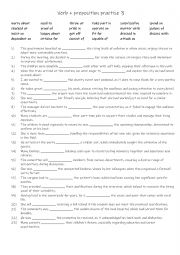
|
B1-B2 Verb + preposition practise 3
Many verbs in English are commonly used with specific prepositions, forming phrases that convey distinct meanings. Mastering these combinations helps students sound more natural and fluent. Knowing how to pair verbs with the correct prepositions improves their comprehension of conversations, texts, and media, allowing them to grasp nuanced meanings...
Level: intermediate
Age: 9-100
Type:
Downloads: 133
|
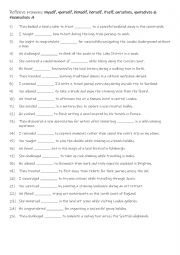
|
A2+-B1 Reflexive pronouns myself, yourself, himself, herself, itself, ourselves, yourselves & themselves 4
Learning reflexive pronouns is essential for effective communication and grammar accuracy, as they indicate when the subject and object of a sentence are the same (e.g., "I made myself a sandwich"). They also provide emphasis (e.g., "She did it herself") and enhance the complexity of sentences (e.g., "We enjoyed ourselves at the party"). Mastering ...
Level: elementary
Age: 8-100
Type:
Downloads: 133
|
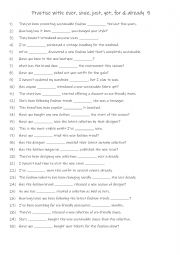
|
A2+-B1 Practise with ever, since, just, yet, for & already 5
First, students need to familiarise themselves with the 6 adverbs and their use. Then they read the sentences to work out which one is needed to complete the gap-fill. Each adverb is used 5 times! Answers on page 2.
Level: elementary
Age: 7-100
Type:
Downloads: 133
|
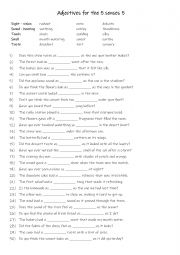
|
A2+-B1 Adjectives for the 5 senses 5
Students should learn sensory adjectives to expand their descriptive vocabulary and enhance their communication skills. These words enable vivid and engaging descriptions, bringing writing and speech to life with clarity and detail. Adjectives like "picturesque," "deafening," or "tangy" help students express nuanced observations, while emotive term...
Level: elementary
Age: 9-100
Type: worksheet
Downloads: 133
|
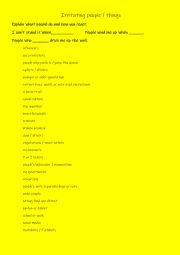
|
26 Irritating people or things B1-C1
Students explain what they do / how they react in certain situations. There are 3 phrases which need to be pre-taught to help students use the target language correctly.
Level: intermediate
Age: 13-100
Type:
Downloads: 132
|
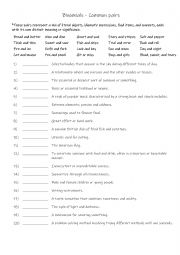
|
Binomials - Common pairs
These pairs represent a mix of literal objects, idiomatic expressions, food items, and concepts, each with its own distinct meaning or significance. Students read the descriptions and work out the what pair of things they are describing. They then look for the pair in bold.This worksheet is suitable for CEFR B1 + -C1 level students.Answers on page ...
Level: intermediate
Age: 14-100
Type:
Downloads: 132
|
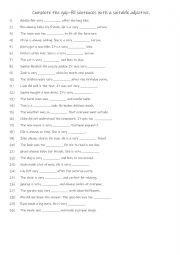
|
A2-B1 Complete the gap-fill sentences with a suitable adjective.
Students read the sentences then complete the gap-fill with a suitable adjective. This worksheet could also be used as a warmer/ cooler game where students get 1 point for a suitable adjective and 3 points if no other team has used that adjective. Possible answers on page 2.
Level: intermediate
Age: 10-100
Type:
Downloads: 132
|
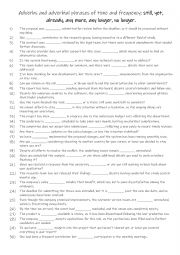
|
B1+-B2 Adverbs and adverbial phrases of time and frequency still, yet, already, any more, any longer, no longer.
These adverbs and phrases help students describe actions, events, and situations with greater detail, making their language more engaging and nuanced. Language proficiency tests often include questions that require understanding and using these adverbs correctly, so practicing them can improve exam performance. Understanding and using these adverbs...
Level: intermediate
Age: 12-100
Type:
Downloads: 132
|
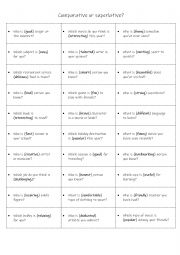
|
B1 30 comparative or superlative questions
This worksheet contains 30 generic but interesting questions for students to be able to practise using comparatives and superlatives. It enables students to give their opinions on various current topics. It is suitable for both pairs and small groups.
Level: intermediate
Age: 10-100
Type:
Downloads: 132
|
|
|
|
|












